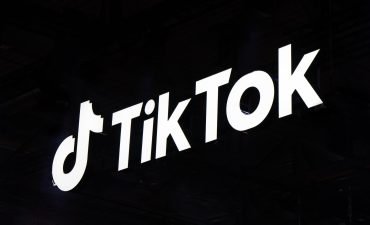Amazon, the e-commerce giant that has revolutionized the way we shop, is not only known for its vast selection of products and lightning-fast delivery. Behind its towering success lies a workforce of thousands, tirelessly working to ensure that packages reach our doorsteps in record time. But have you ever wondered how much these dedicated employees earn? In this article, we delve into the realm of wages and explore just how much Amazon pays per hour. From entry-level positions to specialized roles, we uncover the intricacies of Amazon’s pay scale and examine what it means for both employees and the company as a whole.
Overview of Amazon and its workforce

Amazon, the global e-commerce giant, is known for its vast workforce. With over 1.3 million employees worldwide, the company has a significant presence in the job market. However, what sets Amazon apart from other companies is its unique hiring practices and employment opportunities.
One of the notable aspects of Amazon’s workforce is its diversity. The company attracts talent from various backgrounds and nationalities, creating a diverse mix of employees who bring different perspectives to the table. This diversity not only fosters innovation and creativity but also promotes inclusivity within the organization. Another interesting aspect of Amazon’s workforce is its emphasis on technological advancements. With a focus on automation and artificial intelligence, the company constantly invests in cutting-edge technologies to streamline operations and improve efficiency. This not only enhances productivity but also provides employees with new opportunities to learn and grow in this rapidly evolving tech-driven era.
Minimum Wage:
Minimum wage has been a topic of debate for years, and Amazon’s stance on this issue has recently garnered attention. While the company claims to pay its employees at least the federal minimum wage of $7.25 per hour, critics argue that this is not enough for individuals to live comfortably. In fact, some have pointed out that the current minimum wage falls far short of what is considered a living wage in many parts of the country.
Additionally, it is essential to consider the rising cost of living and inflation rates when discussing minimum wage. What may have been sufficient a decade ago does not necessarily hold true today. With housing prices skyrocketing and basic necessities becoming more expensive by the year, it is questionable whether an hourly rate that barely covers bare essentials can truly provide workers with financial stability. Moreover, it’s important to examine not just how much Amazon pays its employees per hour but also factors such as working conditions and job security. While they may meet or exceed the minimum wage requirement on paper, reports suggest that some Amazon employees endure grueling workloads and limited opportunities for advancement within the company. This raises concerns about overall employee well-being beyond just compensation.
Discussion of Amazon’s minimum wage policies
Amazon’s minimum wage policies have been a subject of much debate and scrutiny in recent years. On one hand, the e-commerce giant made headlines in 2018 when it raised its minimum wage to $15 per hour, a move hailed by many as a positive step towards improving employee wages and standards. However, critics argue that Amazon’s commitment to fair wages extends only to full-time workers while overlooking part-time employees and contractors who may still be making significantly lower wages.
Another aspect of Amazon’s minimum wage policies that often goes unmentioned is the potential impact on smaller businesses. While increasing the minimum wage may benefit some workers within the company, it could also create an uneven playing field for smaller competitors who don’t have the financial resources to match Amazon’s salary offers. This disparity could potentially result in even greater market dominance for Amazon, exacerbating concerns about its already considerable influence over various industries. However one views Amazon’s minimum wage policies, it is clear that they are not without controversy or their own set of complexities. Balancing fair compensation for employees while considering the wider implications on competition and industry dynamics is undoubtedly a challenge for any large corporation like Amazon. As consumers continue to support companies with higher ethical standards, organizations like Amazon must find ways to address these concerns effectively if they want to maintain their reputation as leaders in the market.
Average Hourly Pay:
In the world of minimum wage jobs, average hourly pay is a topic that often sparks debates and discussions. Amazon, one of the largest employers globally, has been under scrutiny for its hourly wages. While the company claims to offer competitive compensation packages, critics argue that the average hourly pay falls short in comparison to the soaring profits it generates.
One perspective suggests that analyzing average hourly pay alone may not provide a complete picture. It’s crucial to consider other factors such as employee benefits, growth opportunities within the company, and overall work environment. For instance, Amazon offers attractive benefits like health insurance, retirement plans, and paid time off that can significantly enhance an employee’s income potential. Furthermore, employees have reported opportunities for career advancement within the organization. On the other hand, another viewpoint highlights how average hourly pay directly impacts workers’ livelihoods. In some regions where living costs are high or if employees are supporting families on their earnings alone without additional assistance or benefits from Amazon or elsewhere—an insufficient average hourly pay rate can lead to financial strain and limited upward socioeconomic mobility.
Information on the typical hourly pay at Amazon
When it comes to hourly pay at Amazon, the numbers can vary depending on several factors. On average, an entry-level warehouse worker at Amazon can expect to make around $15 per hour. However, this figure may be higher in cities with a higher cost of living. It’s worth noting that while this wage is above the federal minimum wage of $7.25 per hour, some critics argue that it falls short considering the size and profitability of the company.
Amazon has faced criticism for its treatment of workers and calls for higher pay have been echoing throughout the industry. Recently, Amazon announced plans to increase its starting hourly pay to $17 in order to attract more employees amidst a labor shortage. Additionally, the company offers various benefits such as health insurance and retirement plans for both full-time and part-time employees, aiming to provide a comprehensive package beyond just compensation. Ultimately, while typical hourly pay at Amazon may not be extraordinary compared to other jobs in retail or warehousing sectors, it is important to consider all aspects of employment in order to accurately assess its value proposition for potential workers.
Conclusion:
In conclusion, the hourly wage debate surrounding Amazon’s pay scale is a complex and multifaceted issue. While it is clear that Amazon pays above the federal minimum wage, there are still concerns about whether this is enough to meet the high cost of living in many areas where Amazon operates. Furthermore, the company’s decision to eliminate certain bonus programs and stock options has drawn backlash from employees who feel that their overall compensation has been compromised.
However, it is important to consider the larger context in which Amazon operates. The company not only provides jobs for thousands of individuals but also drives economic growth by stimulating local businesses and supporting small suppliers. Additionally, while hourly wages may be lower than desired for some workers, other benefits such as healthcare coverage and tuition assistance programs offer valuable support for employees seeking advancement opportunities.
Ultimately, the question of how much Amazon pays per hour cannot be answered with a simplistic viewpoint. It demands a thorough understanding of both individual employee needs and broader economic factors at play. As we continue to navigate discussions around fair compensation in today’s competitive job market, it is crucial for all stakeholders involved – including employers like Amazon – to actively listen to employee concerns and seek innovative solutions that balance profitability with worker well-being.
Also Read: Tips For Optimising Your Web Development Workflow







